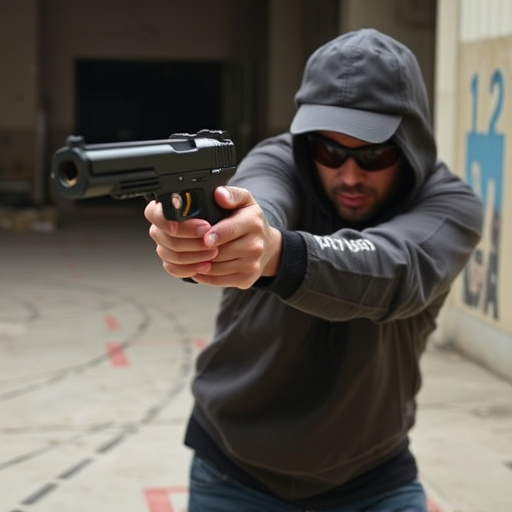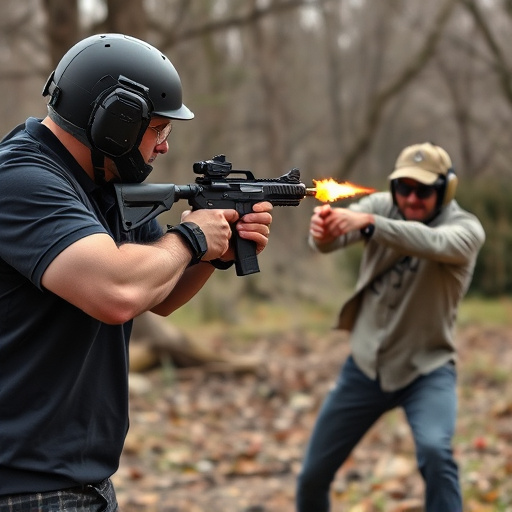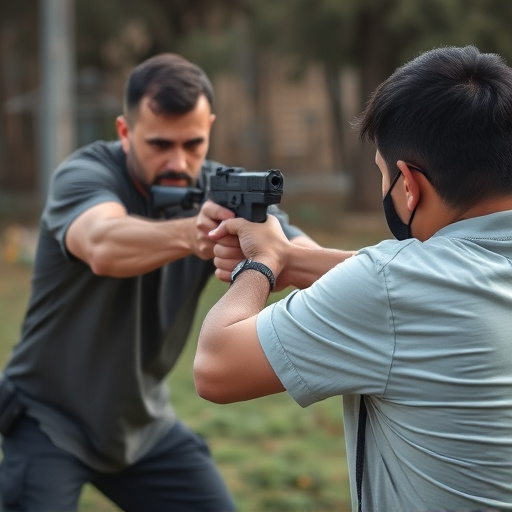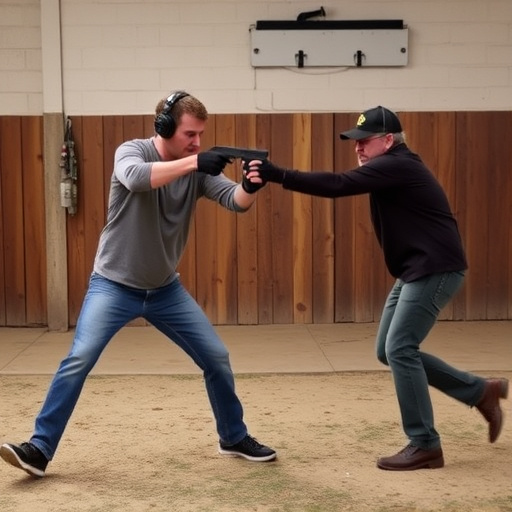Stun guns, while powerful tools for self-defense, pose risks of accidental discharge due to various factors like contact damage, improper maintenance, and user error. To prevent these incidents, users should prioritize regular cleaning, lubrication, and adherence to manufacturer instructions. Modern stun guns feature advanced safety mechanisms such as trigger locks and smart sensors, which significantly reduce the chance of accidental activation. Effective trigger design, battery management systems, and comprehensive user training are crucial for minimizing risks. The future holds promise with smart technology integrating AI algorithms to discern intent and provide real-time feedback, revolutionizing personal safety by addressing the core issue of preventing accidental stun gun discharges.
In today’s world, personal safety is paramount, making stun guns a popular choice for self-defense. However, understanding their inner workings and potential misfires is crucial. This article explores the intricacies of stun gun mechanisms, delving into common causes of misfires and essential safety features designed to prevent accidental discharges. From trigger design and battery health to user training and future smart technologies, we uncover vital strategies for preventing unwanted stun gun activations.
- Understanding Stun Gun Mechanism and Common Misfires
- Essential Safety Features for Stun Guns
- Trigger Design and Its Role in Accidental Discharge Prevention
- The Impact of Battery Health on Stun Gun Performance
- User Training and Best Practices to Avoid Misfires
- Future Technologies: Smart Stun Guns for Enhanced Safety
Understanding Stun Gun Mechanism and Common Misfires

Stun guns operate by delivering an electric current through two metal prongs or contacts, which temporarily disables a target by disrupting their nervous system. When activated, the device generates a high-voltage, low-amperage electrical pulse that can cause muscle spasms, disorientation, and temporary paralysis. While effective in self-defense situations, stun guns are not without their risks, with one of the primary concerns being accidental discharge or misfire.
Common causes of stun gun misfires include dry or damaged contact points, improper maintenance, flaws in design, or user error. Preventing accidental stun gun discharge involves regular cleaning and lubrication of contacts to ensure optimal conductivity, adhering to manufacturer guidelines for use and storage, and choosing models with advanced safety mechanisms like trigger locks, smart sensors that detect body contact, or multiple activation switches. By understanding the stun gun’s mechanism and addressing potential misfire causes through proactive measures, users can maximize the tool’s effectiveness while minimizing accidental discharge risks.
Essential Safety Features for Stun Guns

Stun guns, while powerful tools for self-defense, require meticulous design and safety features to prevent accidental discharge. Among the essential elements are tactical triggers that ensure only deliberate pressure results in activation. This prevents misfires caused by unexpected movements or unintended contacts, keeping users safe and ensuring the device is a reliable tool when needed most.
Additionally, smart circuit designs play a crucial role in preventing accidental stun gun discharges. These circuits include advanced mechanisms that detect both the user’s intent and proper application to deliver the stun. Such features mitigate risks associated with mishandling, ensuring the stun gun only activates under controlled conditions. This is vital for users’ peace of mind, especially when carrying a potentially lethal device for personal safety.
Trigger Design and Its Role in Accidental Discharge Prevention

The design of a stun gun’s trigger plays a pivotal role in preventing accidental discharges, which is a critical safety feature. Modern stun guns incorporate sophisticated mechanisms to ensure the device activates only when intended. These triggers often require a specific sequence of actions to fire, reducing the likelihood of unintended discharge during routine carry or storage. For instance, some models use a combination of pressure and a secondary locking mechanism, demanding more than a simple bump or nudge to activate.
This focus on trigger design is essential in preventing accidental stun gun discharges, ensuring users’ safety and the device’s reliability. By employing these advanced features, manufacturers aim to provide peace of mind for carriers, knowing that their stun guns are less susceptible to misfires in various scenarios.
The Impact of Battery Health on Stun Gun Performance

The health and condition of batteries play a pivotal role in ensuring the reliable performance of stun guns, ultimately contributing to preventing accidental stun gun discharges. Stun guns are designed to deliver an electric shock that temporarily disables an assailant, relying on the power source to initiate this response. However, outdated or poorly maintained batteries can significantly impact the device’s functionality. A weak or dead battery may cause the stun gun to misfire, rendering it ineffective in emergency situations where every second counts.
Regularly checking and replacing batteries as recommended by the manufacturer is essential in maintaining optimal performance. Modern stun guns often feature advanced battery management systems that monitor voltage levels, alerting users when a battery requires replacement. This proactive approach ensures the device remains operational when needed most, reducing the risk of accidental discharge due to battery-related failures. By keeping batteries healthy and up to standard, users can have peace of mind, knowing their stun gun is reliable in any situation.
User Training and Best Practices to Avoid Misfires

User Training and Best Practices are essential components in preventing accidental stun gun discharge. Before handling any stun device, users must undergo comprehensive training that covers proper usage, safety precautions, and emergency procedures. This includes learning the weapon’s trigger mechanisms, understanding the range of effectiveness, and recognizing when to deploy it safely. Regular practice sessions can reinforce these skills and instill a muscle memory that helps avoid mistakes in high-pressure situations.
In addition to formal training, adhering to best practices is crucial. These include keeping the stun gun in a secure location until needed, ensuring proper maintenance and battery charging, and always treating the device with respect. Users should also be aware of local laws and regulations regarding stun gun ownership and usage, as these can vary significantly. Preventing accidental misfires isn’t just about technical knowledge; it’s a matter of discipline, responsibility, and staying alert in potentially dangerous situations.
Future Technologies: Smart Stun Guns for Enhanced Safety

The future of stun gun technology looks promising with the integration of smart features designed to enhance safety and prevent accidental discharges. These innovative devices leverage advanced sensors and artificial intelligence algorithms to detect intent and ensure safe usage, significantly reducing the risk of unintended activation. By understanding user behavior and movement patterns, smart stun guns can differentiate between a deliberate use scenario and an accidental touch or fall, thus preventing any unwanted shocks.
One of the key advantages is the integration of real-time feedback mechanisms that inform users about the device’s status, ensuring they are fully aware of its operational mode at all times. This level of user interaction promotes responsible handling and reduces instances of accidental stun gun misfires, making them a game-changer in personal safety technology.
Stun guns, when used properly, can be powerful tools for self-defense. Implementing and understanding misfire prevention features, such as advanced trigger designs and battery health monitoring, is crucial in ensuring user safety and the reliability of these devices. By combining these innovations with rigorous user training, we can significantly reduce the risk of accidental discharges, making stun guns safer and more effective for personal protection. Future developments in smart stun gun technology promise even greater safety enhancements, offering users peace of mind in high-stress situations.
